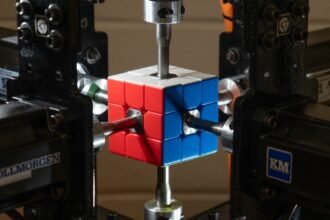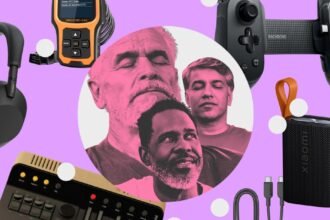If you watch the Mission: Impossible films in sequence, a distinct storyline unfolds. Ethan Hunt (Tom Cruise), a dedicated and optimistic undercover operative, faces betrayal from his own government as well as from an insider. He loses the team he relies on and nearly becomes a scapegoat himself. This betrayal leads him to become disillusioned and act independently, undertaking vital missions to protect his country and the world while choosing not to trust government structures or establish close relationships, to avoid further loss. While he accomplishes his missions successfully, he struggles to evade emotional connections, leading to the continuous loss of cherished individuals. In an effort to prevent this pattern, he keeps taking on greater risks, placing himself in dangerous situations to protect others.
Additionally, there’s a subtler, yet intriguing theme throughout the films: the story of a man with an incredibly strong grip.
In the latest movie, Mission: Impossible — The Final Reckoning, Ethan finds himself dangling from two separate biplanes during a much-anticipated action scene, focused on keeping his grip on their landing gear while the aircraft perform loops and rolls, sending his body swinging into the air.
True to promotional claims, this sequence has been marketed as Cruise’s most exhilarating stunt to date. Yet, it bears a striking resemblance to a moment from Mission: Impossible — Rogue Nation, where Ethan clings to the side of an Airbus A400M as it taxis down the runway, not letting go as it takes flight.
These heart-pounding stunts share a common element: Ethan’s remarkable grip strength, which allows him to hang on even under extreme speed and minimal support. A look back at his jaw-dropping exploits reveals numerous scenarios where he relies on this ability to grasp and hold on for dear life.
For instance, in Mission: Impossible — Dead Reckoning Part One, he saves Grace (Hayley Atwell) from falling as she teeters off the edge of a rapidly braking train, hanging on to her hand as the train is on the verge of calamity. As the train begins to fall apart, he swings from one car to another, continuously maintaining his grip to rescue Grace again.
In Mission: Impossible — Fallout, there’s a scene where he clings to a rope dangling from a chopper, climbing up towards the landing gear. However, his grip slips momentarily, leading to a desperate grasp of the cargo at the end of the rope before attempting to cling to the landing gear once more.
Not every exhilarating moment involves his grip, however; sometimes Ethan simply outruns danger. Whether he’s driving a motorcycle off a cliff or skydiving, he finds himself in hair-raising situations. Yet, in many key sequences, he leans on that vice-like grip. The iconic Burj Khalifa climb in Mission: Impossible — Ghost Protocol highlights this, where things take a critical turn when one of his high-tech gloves malfunctions, forcing him to depend purely on his natural strength to ascend.
Conversely, in Mission: Impossible III, while the central action focuses on parachuting and confronting adversaries, Ethan still ends up precariously suspended off a building edge.
Why is grip strength so crucial for Ethan Hunt? His many life-threatening situations justify the need to develop a powerful grip. It’s a wise choice for anyone in his line of work. Yet, I believe it ties back to the events of the franchise’s beginnings in 1996.
In the first film, Ethan executes a dangerous infiltration of a CIA vault, where he finds himself reliant on former agent Franz Krieger (Jean Reno) to lower him in and lift him back out. Notably, it is Krieger’s grip that becomes a pivotal element of the mission’s success, but his lack of composure puts Ethan’s life in danger twice — indicating the importance of unwavering grip strength.
This experience likely cemented the value of hand strength into Ethan’s psyche, prompting him to prioritize grip training throughout his career, much like he addresses other personal traumas through his solitary mission approach.
What evidence supports this notion? In Mission: Impossible II, during a rare moment of downtime, we find Ethan engaging in rock climbing, suspended above perilous drops, once again relying on the strength of his grip.
Fast forward to Final Reckoning, it seems he has lightened his stance on forming connections, allowing himself the luxury of a team he trusts. However, his commitment to holding on with incredible strength remains steadfast, proving that he’s got a lot riding on his capable hands.









